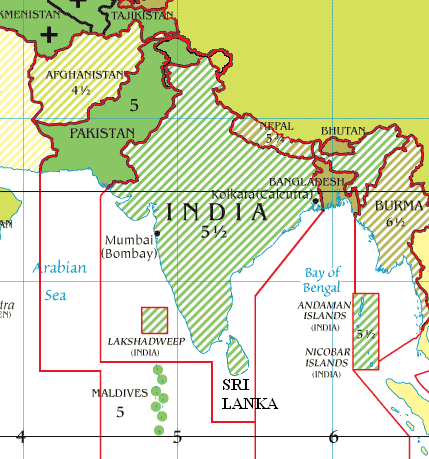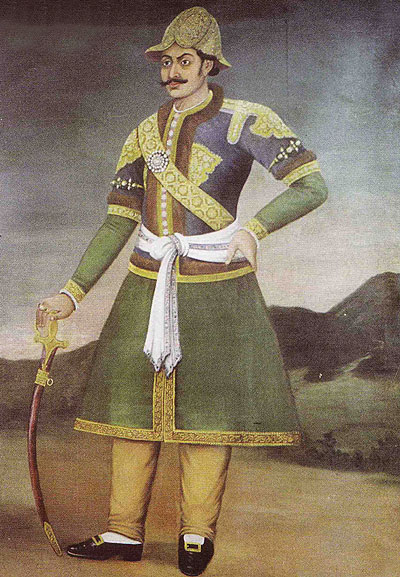|
Dolpa District
Dolpa District (), is a district, located in Karnali Province of Nepal, It is one of the seventy-seven districts of Nepal and one of ten district of Karnali. The district, with Dunai as its district headquarters, covers an area of and has a population (2023) of 43,000. Dolpa is the largest district of Nepal in terms of area. Geography and climate Dolpa is the largest district of Nepal covering 5.36% of the total landmass of the country. It is located at 28°43’N to 29°43’N latitude and 82°23’E to 83°41’E longitude. Elevation ranges from . The district borders Tibet on the north and northeast, Jumla and Mugu districts on the west, Myagdi, Jajarkot, Western and Eastern Rukum on the south, and Mustang on the east. A large portion of the district is protected by Shey Phoksundo National Park. The name is derived from the 12th-century Shey Monastery and the deepest lake in Nepal, the Phoksundo Lake, both of which lie in the district. The park protects endangered a ... [...More Info...] [...Related Items...] OR: [Wikipedia] [Google] [Baidu] |
Districts Of Nepal
Districts in Nepal are second level of administrative divisions after provinces. Districts are subdivided into municipalities and rural municipalities. There are seven provinces and 77 districts in Nepal. After the 2015 reform of administrative divisions, Nawalparasi District and Rukum District were respectively divided into Parasi District and Nawalpur District, and Eastern Rukum District and Western Rukum District. District officials District official include: * Chief District Officer, an official under Ministry of Home Affairs is appointed by the government as the highest administrative officer in a district. The C.D.O is responsible for proper inspection of all the departments in a district such as health, education, security and all other government offices. * District Coordination Committee acts as an executive to the District Assembly. The DCC coordinates with the Provincial Assembly to establish coordination between the Provincial Assembly and rural muni ... [...More Info...] [...Related Items...] OR: [Wikipedia] [Google] [Baidu] |
House Of Representatives (Nepal)
The House of Representatives, commonly known as Pratinidhi Sabha (), is one of the houses of the Federal Parliament of Nepal, with the other house being the National Assembly. Members of the House of Representatives are elected through a parallel voting system. They hold their seats for five years or until the body is dissolved by the President on the advice of the council of ministers. The house meets at the International Convention Centre in Kathmandu. The House has 275 members; 165 elected from single-member constituencies by first-past-the-post voting and 110 elected through proportional electoral system where voters vote for political parties, considering the whole country as a single election constituency. The House of Representatives, unless dissolved, continues to operate for five years from the date appointed for its first meeting. However, in a state of emergency, the term of the House of Representatives may be extended, not exceeding one year in accordance with feder ... [...More Info...] [...Related Items...] OR: [Wikipedia] [Google] [Baidu] |
Central Bureau Of Statistics (Nepal)
The Central Bureau of Statistics () is the central agency for the collection, consolidation, processing, analysis, publication and dissemination of statistics in Nepal. One of its core tasks is to research and publish censuses of Nepal, the most prominent one being the overall population census and Demographics of Nepal. History The Central Bureau of Statistics was established in 1959 under the National Planning Commission of Nepal, which is headed by the Prime Minister of Nepal. Before 2015, different Nepalese governmental organisations gathered statistical information on their own. This led to inconsistencies in statistical information, for which the Bureau called for improvement of the processes, which, however, were not implemented as of 2017. The Bureau's main functions include providing its government with statistics to help with public policy planning, collecting and analyzing socioeconomic data, and developing methodologies for reliable data collection and implementatio ... [...More Info...] [...Related Items...] OR: [Wikipedia] [Google] [Baidu] |
Districts Of Nepal
Districts in Nepal are second level of administrative divisions after provinces. Districts are subdivided into municipalities and rural municipalities. There are seven provinces and 77 districts in Nepal. After the 2015 reform of administrative divisions, Nawalparasi District and Rukum District were respectively divided into Parasi District and Nawalpur District, and Eastern Rukum District and Western Rukum District. District officials District official include: * Chief District Officer, an official under Ministry of Home Affairs is appointed by the government as the highest administrative officer in a district. The C.D.O is responsible for proper inspection of all the departments in a district such as health, education, security and all other government offices. * District Coordination Committee acts as an executive to the District Assembly. The DCC coordinates with the Provincial Assembly to establish coordination between the Provincial Assembly and rural muni ... [...More Info...] [...Related Items...] OR: [Wikipedia] [Google] [Baidu] |
Nepal Time
Nepal Standard Time (NPT) is the time zone for Nepal. With a time offset from Coordinated Universal Time (UTC) of UTC+05:45 all over Nepal, it is one of only three time zones with a 45-minute offset from UTC.The others are Chatham Island Standard Time, with an offset of UTC+12:45, and the unofficial Australian Central Western Time, with an offset of UTC+08:45. Calculation NPT is an approximation of Kathmandu mean time, which is 5 hours, 41 minutes, and 16 seconds ahead of UTC. The standard meridian passes through the peak of Gaurishankar mountain about east of Kathmandu. History Nepal used local solar time until the year 1920, in Kathmandu UTC+05:41:16. In 1920, Nepal adopted Indian Standard Time Indian Standard Time (IST), sometimes also called India Standard Time, is the time zone observed throughout the Republic of India, with a time offset of UTC+05:30. India does not observe daylight saving time or other seasonal adjustments. I ..., UTC+05:30. In 1986 ... [...More Info...] [...Related Items...] OR: [Wikipedia] [Google] [Baidu] |
Roads In Nepal
The road network in Nepal plays a vital role in connecting its diverse geographical and cultural landscapes. As a landlocked country nestled in the Himalayas, Nepal faces unique challenges in road construction and maintenance, yet significant strides have been made to improve transportation infrastructure. Nepal Road Standard (1970–2020) The development of roadways in Nepal began in earnest during the 1950s. Prior to that, the country relied heavily on ancient footpaths, mule tracks, and river transportation. The construction of the Tribhuvan Highway in 1956 marked the beginning of modern road infrastructure in Nepal. This highway connected Kathmandu, the capital city, to the Indian border town of Raxaul, facilitating trade and travel. Nepal Road Standard after 2021 In 2021 SNH 2020/21 released by government shows all the previous feeder roads either converted to new National Highways or ceasing to be classified as feeder roads and handed over to provincial governments. In Ne ... [...More Info...] [...Related Items...] OR: [Wikipedia] [Google] [Baidu] |
Languages Of Nepal
Languages of Nepal, referred to as Nepalese languages in the Constitution of Nepal, country's constitution, are the languages having at least an ancient history or origin inside the sovereign territory of Nepal, spoken by Nepalis. There were 124 mother tongues according to the "National Report on caste/ethnicity, language & religion", 2021 Nepal census, National Population and Housing Census 2021 in Nepal. Nepali language, Nepali accounted as a mother tongue for 44.86% while also being a second additional language for 46.2% of the total population. Most belong to the Indo-Aryan languages, Indo-Aryan and Sino-Tibetan languages, Sino-Tibetan language families. The official working language at federal level is Nepali, but the constitution provisions each province to choose one or more additional official working languages. The Language Commission (Nepal), Language Commission of Nepal in 2021 recommended 14 official languages for different provinces of Nepal. The mother languages ... [...More Info...] [...Related Items...] OR: [Wikipedia] [Google] [Baidu] |
Human Development Index
The Human Development Index (HDI) is a statistical composite index of life expectancy, Education Index, education (mean years of schooling completed and expected years of schooling upon entering the education system), and per capita income indicators, which is used to rank countries into four tiers of Human development (humanity), human development. A country scores a higher level of HDI when the life expectancy at birth, lifespan is higher, the education level is higher, and the gross national income GNI (PPP) per capita is higher. It was developed by Pakistani economist Mahbub ul-Haq and was further used to measure a country's development by the United Nations Development Programme (UNDP)'s Human Development Report Office. The 2010 Human Development Report introduced an List of countries by inequality-adjusted Human Development Index, inequality-adjusted Human Development Index (IHDI). While the simple HDI remains useful, it stated that "the IHDI is the actual level of huma ... [...More Info...] [...Related Items...] OR: [Wikipedia] [Google] [Baidu] |
Magar People
The Magars, also spelled Mangar and Mongar, are the largest ethnic group native to Nepal and Northeast India, representing 6.9% of Nepal's total population according to the 2021 Nepal census. They are one of the main Gurkha tribes. The first home of the Magars was to the west of the Gandaki River and, roughly speaking, consisted of that portion of Nepal which lies between and around about Gulmi, Arghakhanchi, and Palpa. This part of the country was divided into twelve districts known as ''Bahra Magarat'' (Confederation of Twelve Magar villages), which included the following regions of that period: Argha, Khanchi, Bhirkot, Dhor, Garhung, Ghiring, Gulmi, Isma, Musikot, Rising, Satung, and Pyung. During the medieval period, the whole area from Palpa to Rukum Rolpa was called the Magarat, a place settled and inhabited by Magars. Another confederation of eighteen Magar kingdoms, known as ''Athara Magarat'', also existed and was originally inhabited by Kham Magars. Geographic ... [...More Info...] [...Related Items...] OR: [Wikipedia] [Google] [Baidu] |
Chhetri
Chhetri (Kshetri, Kshettri, Kshetry or Chhettri), ( ; IAST: ''Kṣetrī'') historically called Kshettriya or Kshetriya or Khas are Nepali language, Nepali speaking people historically associated with the warrior class and administration, some of whom trace their origin to migration from medieval India. Chhetri was a caste of administrators, governors, Bir Bhadra Thapa, warriors and military elites in the medieval Khasa kingdom, Khas Kingdom and Gorkha Kingdom (later unified Kingdom of Nepal). The nobility of the Gorkha Kingdom mainly originated from Chhetri families. They also had a strong presence in civil administration affairs. The bulk of Prime Minister of Nepal, prime ministers of Nepal before the Revolution of 1951, democratization of Nepal belonged to this caste as a result of the old Gorkhali aristocracy. Gorkha-based aristocratic Chhetri families included the Pande dynasty, the Basnyat dynasty, the Kunwar family (and their offspring branch, the autocratic Rana dynasty) an ... [...More Info...] [...Related Items...] OR: [Wikipedia] [Google] [Baidu] |
Demographics
Demography () is the statistical study of human populations: their size, composition (e.g., ethnic group, age), and how they change through the interplay of fertility (births), mortality (deaths), and migration. Demographic analysis examines and measures the dimensions and dynamics of populations; it can cover whole societies or groups defined by criteria such as education, nationality, religion, and ethnicity. Educational institutions usually treat demography as a field of sociology, though there are a number of independent demography departments. These methods have primarily been developed to study human populations, but are extended to a variety of areas where researchers want to know how populations of social actors can change across time through processes of birth, death, and migration. In the context of human biological populations, demographic analysis uses administrative records to develop an independent estimate of the population. Demographic analysis est ... [...More Info...] [...Related Items...] OR: [Wikipedia] [Google] [Baidu] |




